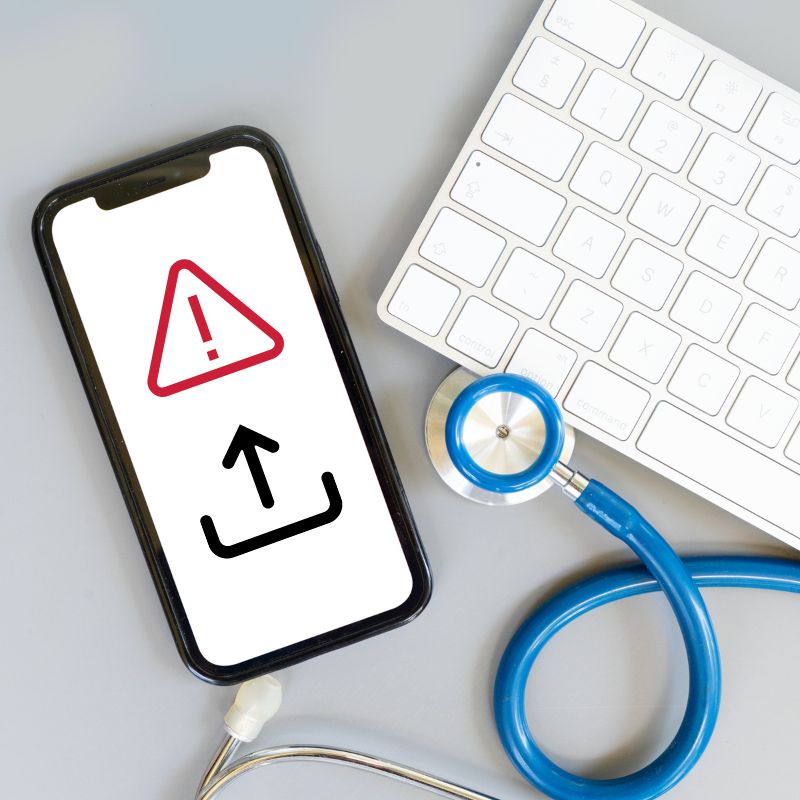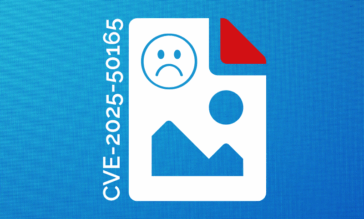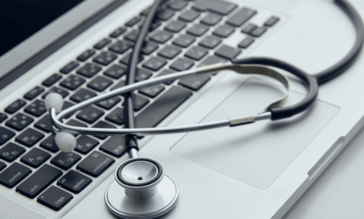The Rising Threat to Healthcare Portals

Healthcare moves quickly, and health insurers in the US are making complex decisions that directly affect patient care. To ensure that patient care happens as fast as possible, healthcare providers utilize web portals to facilitate a seamless exchange of information between insurance companies, providers, and patients, streamlining the submission and processing of claims, managing policyholder information, and facilitating communication.
These file upload portals serve as critical nodes, efficiently handling vast quantities of sensitive data, including personal details, medical records, and financial information integral to insurance operations. This digital infrastructure supports the administrative facets of insurance and enhances customer service by providing policyholders and providers with quick access to insurance claims and policy details. By leveraging these web portals, healthcare entities aim to improve operational efficiency and ensure timely service delivery. Yet, just like any piece of technology that’s meant to add convenience, it can open a can of worms if not properly secured.
The Problem with Web Portals
While web portals are used in many industries, from financial services to critical infrastructure, healthcare providers and their affiliated entities process countless health insurance claims daily, transferring vast amounts of protected health information (PHI) across various platforms. As critical junctures for data transfer, these portals are prime targets for cyber threats, primarily because of the sensitive nature of the data they handle.
The challenge lies in the dual risk these portals present from possible malware being included in uploaded files and threat actors targeting sensitive data within them.
Understanding the Risks of File Uploads via Web Portals
The primary concern of portals is file uploads containing malware, which can easily compromise entire systems. For example, an unsuspecting employee might upload a document received from an external source, not knowing it carries a hidden virus. Once this infected file penetrates the portal, it can unleash malware throughout the network, potentially leading to widespread data breaches and operational disruptions.
However, this is only the start of the problem, as data privacy risks remain high even if initial security measures catch and neutralize the malware. Once data has been deemed safe and stored within the system, sensitive data could still fall prey to internal threats or external breaches, such as what happened to Globe Life. A possible scenario might include a cybercriminal gaining unauthorized access to the system through other means, such as stolen credentials, and navigating through the secure network to access and exfiltrate sensitive personal and medical information.
The Need for Robust Healthcare Protection
Protecting this data goes far beyond simply wanting to do the right thing to keep it safe. There are business costs associated with failure. At the forefront of most healthcare organizations is maintaining alignment with compliance with legal mandates such as HIPAA in the US. HIPAA specifically mandates rigorous controls to protect the confidentiality and integrity of patient information and harsh penalties for organizations that fail in this endeavor, even if the failure was due to not doing enough to protect it.
Compliance isn’t just a legal obligation; it’s also essential to maintaining trust between patients, healthcare providers, and insurance entities. Failure to comply has obvious penalties, substantial fines, and potential lawsuits, but the damage to reputation can be far more impactful. It can undermine patient confidence and disrupt business operations.
Data protection is also tied to maintaining the organization’s operational integrity. The systems that manage health insurance claims must be secure, reliable, and efficient to ensure that patient care is not hindered by technical failures or security breaches. Each of these can cause outages, which, in the worst cases, may force healthcare organizations to revert to manual processes and paper records until they are resolved.
Defending Web Portals and Beyond
Data Detection and Response (DDR) offers a sophisticated solution to healthcare portals’ critical security challenges. Not only do advanced DDR solutions use content disarm and reconstruction (CDR) to proactively stop malware threats in their tracks, it’s capable of masking sensitive information, like PHI, while it’s still in-motion to ensure that only authorized parties have access privileges once it reaches the endpoint.
DDR + CDR
This two-fold approach to data security proactively safeguards systems by disarming potential malware, including zero-day threats, embedded in files before they enter the network. By stripping files of harmful components at the point of entry, DDR minimizes the risk of malware infiltration that can compromise sensitive healthcare data and system integrity. Simultaneously, DDR’s privacy masking capabilities ensure that sensitive information is only accessible to authorized individuals, which is crucial for maintaining compliance with privacy laws and regulations like HIPAA.
Tech Integration
To avoid adding stress to an already-complex tech stack, DDR can be seamlessly integrated into existing healthcare IT infrastructures, enhancing overall security measures without disrupting healthcare providers’ essential operational workflows. This integration ensures that DDR strengthens security protocols and supports the continuity of care and administrative processes vital to modern healthcare delivery.
Data Compliance
DDR solutions also facilitate compliance with stringent regulatory requirements such as HIPAA, which mandates rigorous data protection standards to safeguard patient information. By aligning with these compliance standards, healthcare providers can avoid costly penalties and legal complications often associated with data breaches. Implementing DDR also strengthens patients’ and partners’ trust and reliability in healthcare organizations. By demonstrating a commitment to securing sensitive information, healthcare providers enhance their reputation as trustworthy custodians of patient data.
How Votiro Defends the Use of File Upload Portals
Votiro DDR can help healthcare organizations defend their portals and the sensitive data traversing them. Remember the benefits of an advanced DDR platform listed above? Votiro does all of that, and more.
- Votiro seamlessly integrates into existing IT infrastructures, smoothly transitioning without disrupting daily operations.
- Votiro’s advanced DDR technology not only neutralizes malware threats before entry but also includes real-time privacy masking features that ensure sensitive data is only accessible to authorized personnel.
- Votiro’s dual approach helps healthcare providers meet stringent compliance requirements while reinforcing their commitment to protecting patient information.
- Votiro’s Zero Trust approach further complements the use of web portals by treating all uploaded files as zero-day threats, sanitizing and masking them based on specific company policies – all in just milliseconds without causing a loss in essential productivity.
To learn more about Votiro’s Zero Trust DDR capabilities listed above, sign up for a one-on-one demo of the platform or try it free for 30 days and see how Votiro can protect your healthcare organization and its use of critical web portals.
News you can use
Stay up-to-date on the latest industry news and get all the insights you need to navigate the cybersecurity world like a pro. It's as easy as using that form to the right. No catch. Just click, fill, subscribe, and sit back as the information comes to you.
Sign-up Here!
Subscribe to our newsletter for real-time insights about the cybersecurity industry.



